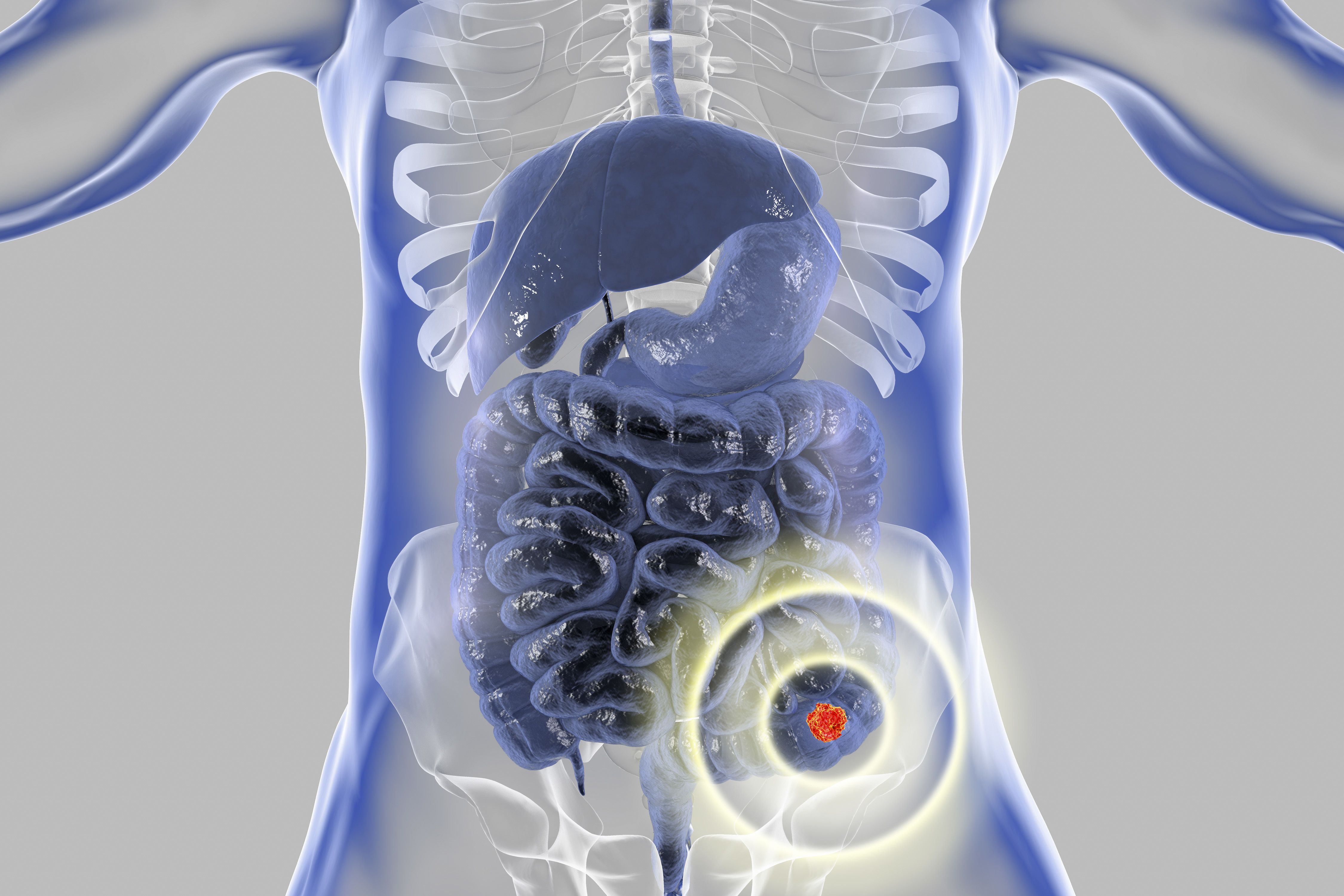Sotorasib Combo Improves Patient-Reported Outcomes in KRAS G12C+ CRC
Data suggest that sotorasib plus panitumumab may represent a valuable new treatment option in this KRAS G12C–mutated colorectal cancer population.
In January 2025, the FDA approved sotorasib/panitumumab for patients with KRAS G12C–mutated CRC based on prior findings from the CodeBreak300 trial.

Sotorasib (Lumakras) plus panitumumab (Vectibix) improved patient-reported outcomes (PROs) at different doses vs investigator’s choice of trifluridine/tipiracil (Lonsurf) or regorafenib (Stivarga) among patients with KRAS G12C–mutated chemorefractory metastatic colorectal cancer (CRC), according to updated findings from the phase 3 CodeBreak300 study (NCT05198934) published in The Lancet Oncology.1
From baseline to week 9, the estimated least-squares mean change in fatigue at its worst was –0.48 (95% CI, –1.18 to 0.23) with sotorasib at 960 mg plus panitumumab, –0.17 (95% CI, –0.86 to 0.52) with sotorasib at 240 mg plus panitumumab, and 0.42 (95% CI, –0.35 to 1.19) with investigator’s choice of therapy. In each respective arm, the estimated least-squares mean change from baseline to week 9 was –0.83 (95% CI, –1.50 to –0.15), –0.52 (95% CI, –1.18 to 0.15), and 0.63 (95% CI, –0.11 to 1.36) for pain at its worst; 4.23 (95% CI, –1.39 to 9.85), 1.29 (95% CI, –4.13 to 6.70), and –5.21 (95% CI, –11.27 to 0.86) for global health status quality of life (GHS-QOL); and –0.27 (95% CI, –4.54 to 4.00), 0.69 (95% CI, –3.44 to 4.81), –5.66 (95% CI, –10.24 to –1.07) for physical function.
Overall, investigators noted a meaningful improvement in pain at its worst for both sotorasib doses, in GHS-QOL with sotorasib at 960 mg, and in physical function with sotorasib at 240 mg. In the sotorasib 960-mg, sotorasib 240-mg, and investigator’s choice arms, respectively, the median time to deterioration was 16.09 weeks (95% CI, 9.54-not estimable [NE]), NE (95% CI, 10.68-NE), and 8.97 weeks (95% CI, 5.84-18.37) for fatigue at its worst; 33.17 weeks (95% CI, 15.38-45.42), NE (95% CI, 12.39-NE), and 12.24 weeks (95% CI, 8.11-NE) for pain at its worst; and 19.93 weeks (95% CI, 8.40-34.17), 13.52 weeks (95% CI, 8.68-NE), and 12.39 weeks (95% CI, 8.26-NE) for GHS-QOL.
“The combination of sotorasib [at] 960 mg and panitumumab not only significantly improved clinical outcomes but also resulted in better PROs that covered domains related to fatigue, pain, and disease-related and treatment-related symptoms and functions. Although not statistically tested, the combination also showed decreased risk of deterioration compared with investigator's choice of trifluridine/tipiracil or regorafenib,” lead study author Dominik Paul Modest, MD, a professor in the Department of Hematology, Oncology, and Cancer Immunology at Charité Universitätsmedizin Berlin, wrote with coauthors in the publication.1 “In the context of the exploratory nature of the PRO analyses, these findings suggest that sotorasib [at] 960 mg combined with panitumumab could represent a valuable new treatment for patients with KRAS G12C–mutated chemorefractory metastatic [CRC] with a favorable profile concerning its effects on [QOL].”
In the open-label CodeBreak300 trial, 160 patients were randomly assigned to receive sotorasib at 960 mg daily plus panitumumab at 6 mg/kg every 2 weeks (n = 53), sotorasib at 240 mg plus panitumumab at the same dose (n = 53), or investigator’s choice of trifluridine/tipiracil or regorafenib (n = 54). Treatment in the investigator’s choice arm consisted of trifluridine/tipiracil at 35 mg/m2 on days 1 to 5 and 8 to 12 twice a day orally or regorafenib at 160 mg orally each day for the first 21 days of each cycle.
The trial’s primary end point was progression-free survival, with secondary end points including overall survival and objective response rate. In these secondary and exploratory analyses, PRO questionnaires included the Brief Fatigue Inventory, Brief Pain Inventory, GHS-QOL and physical function subscales of the European Organisation for Research and Treatment of Cancer QOL Questionnaire Core 30, Patient Global Impression of Change, and GP5 single item of the Functional Assessment of Cancer Therapy - General.
Patients with KRAS G12C–mutant chemorefractory metastatic CRC who were naive to KRAS G12C inhibitor therapy, measurable disease per RECIST v1.1 guidelines, and an ECOG performance status of 0 to 2 were eligible for enrollment in the trial.
The median age was 63 years (range, 37-79) in the sotorasib 960-mg arm, 58 years (range, 34-82) in the sotorasib 240-mg arm, and 65 years (range, 34-81) in the investigator’s choice arm. Across the treatment arms, 44% to 55% were men, 57% to 79% were White, and 83% to 100% were not Hispanic. Additionally, 68% to 72% had liver metastases, 55% to 67% had an ECOG performance status of 0, and 53% to 69% had left-sided disease.
In January 2025, the FDA approved sotorasib/panitumumab for patients with KRAS G12C–mutated CRC based on prior findings from the CodeBreak300 trial.2
References
- Modest DP, Fakih M, Salvatore L, et al. Health-related quality of life in patients with KRASG12C-mutated chemorefractory metastatic colorectal cancer treated with sotorasib plus panitumumab or standard of care (CodeBreaK 300): results from a phase 3, randomized clinical trial. Lancet Oncol. Published online August 11, 2025. doi:10.1016/S1470-2045(25)00352-3
- FDA approves sotorasib with panitumumab for KRAS G12C-mutated colorectal cancer. FDA. January 16, 2025. Accessed August 12, 2025. https://shorturl.at/1WviB